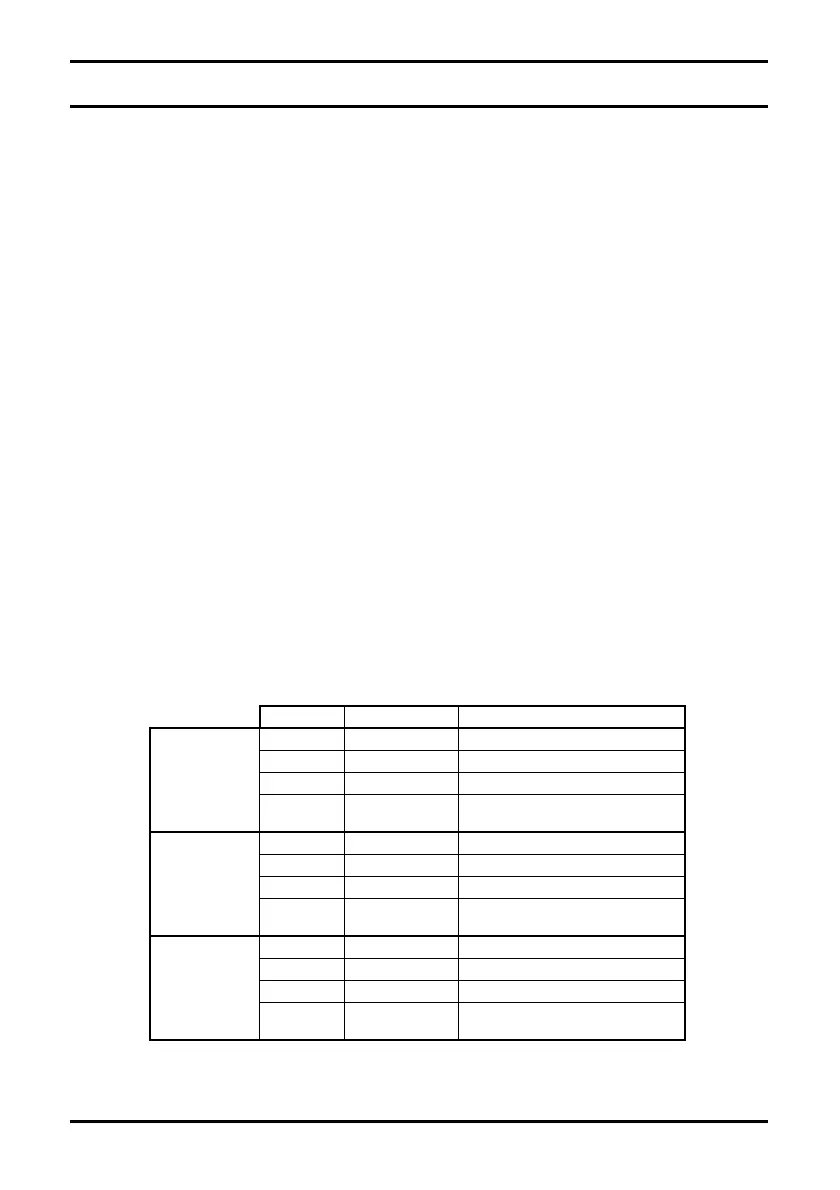104 SM-Applications Modules & Motion Processors User Guide
Issue Number: 4
10 Inter-option Synchronization
10.1 Overview
The Inter-option Module Synchronization scheme provides a mechanism to allow
position control tasks on one or more modules to be synchronized to position control
tasks on another module on the same drive without the need for external wiring.
Synchronization is achieved by one module producing a trigger signal and one or more
modules consuming the trigger signal. These modules are referred to as Producers and
Consumers. The trigger signal is used to alter the scheduling of the POS engine.
If the module is a Producer the trigger may be provided at a rate of 250 µs, 500 µs,
1 ms, 2 ms, 4 ms or 8 ms i.e. Producer modules generate the trigger every POS period,
as specified in Pr
81.12.
This scheme is in addition to the CTSync scheme (refer to section 9 CTSync on
page 97 for more information), although it can be used in conjunction with CTSync to
synchronize modules in more than one drive (see section 10.3 Inter-option
Synchronization example 2 on page 107).
The module, when a Consumer, can run its Position Control tasks at the same rate or
quicker than the Synchronization Signal (trigger) from the Producer.
If a module is a Consumer and its position control task is set to run slower than that of
the Synchronization Signal (trigger) from the Producer, then it will be impossible for it to
know the phase of the Producer, so it will not attempt to synchronize to the Producer’s
signal (see section 10.3 Inter-option Synchronization example 2 on page 107).
10.2 Inter-Option Synchronization example 1
This example shows a scenario where the POS0 tasks of the modules in a drive need to
be synchronized.
The following table shows the settings for each of the 3 modules:
The italicised Pr
91.22 is a status parameter and does not require setting. It shows
whether the module has achieved the Inter-Option functionality specified in Pr
91.21.
For more information refer to Pr
91.12.
Table 10-1 Parameter Settings
Parameter Value Description
Slot 1
Pr
81.06 1 (default) Not in CTSync scheme.
Pr
81.12 2 500 µs position control task period
Pr
91.21 2 Inter-Option Sync Consumer
Pr
91.22 6
Inter-Option Sync Consumer status
achieved
Slot 2
Pr
81.06 1 (default) Not in CTSync scheme.
Pr
81.12 1 250 µs position control task period
Pr
91.21 2 Inter-Option Sync Consumer
Pr
91.22 6
Inter-Option Sync Consumer status
achieved
Slot 3
Pr
81.06 1 (default) Not in CTSync scheme.
Pr
81.12 3 1ms position control task period
Pr
91.21 1 Inter-Option Sync Producer
Pr
91.22 5
Inter-Option Sync Producer status
achieved

